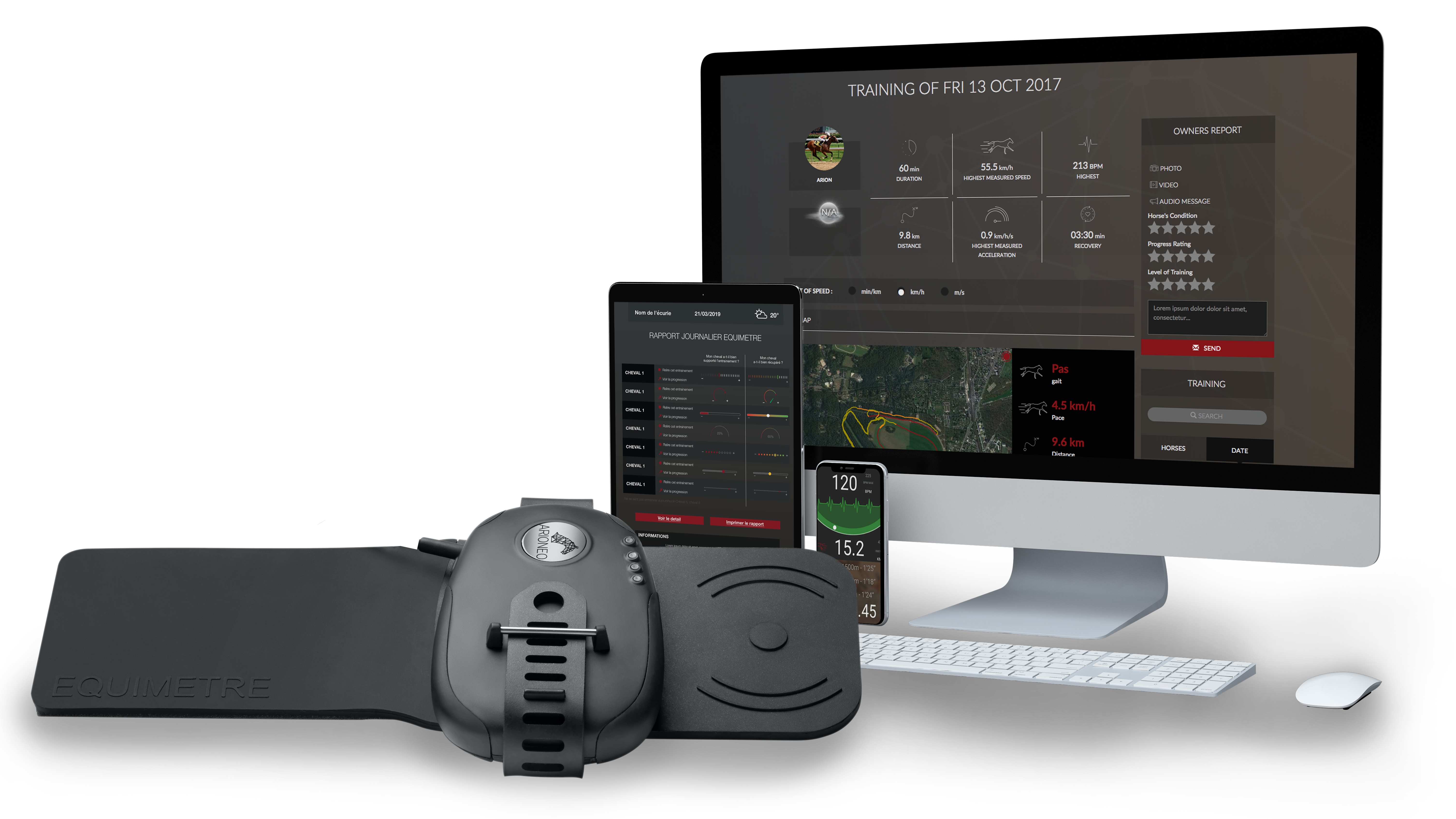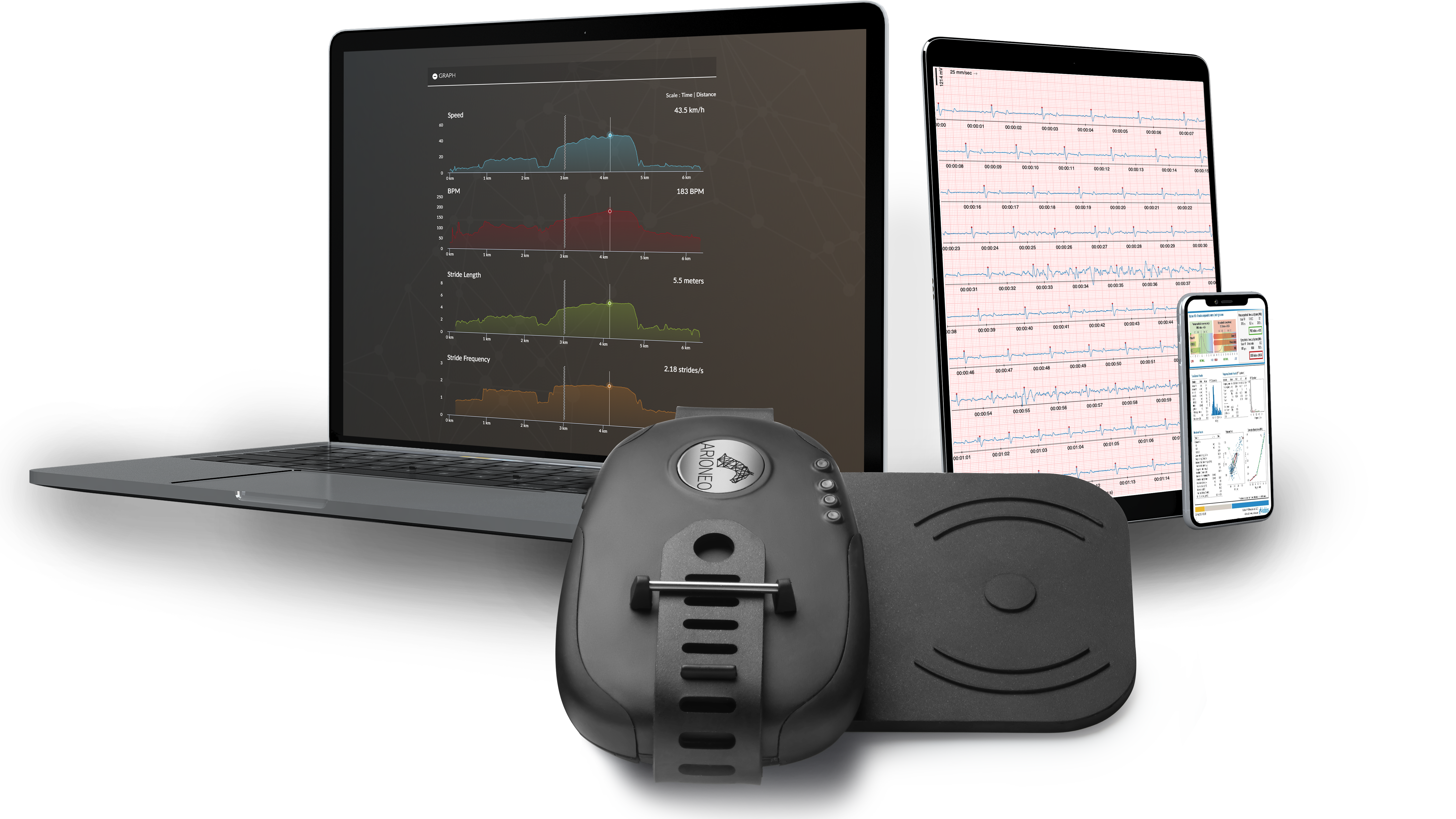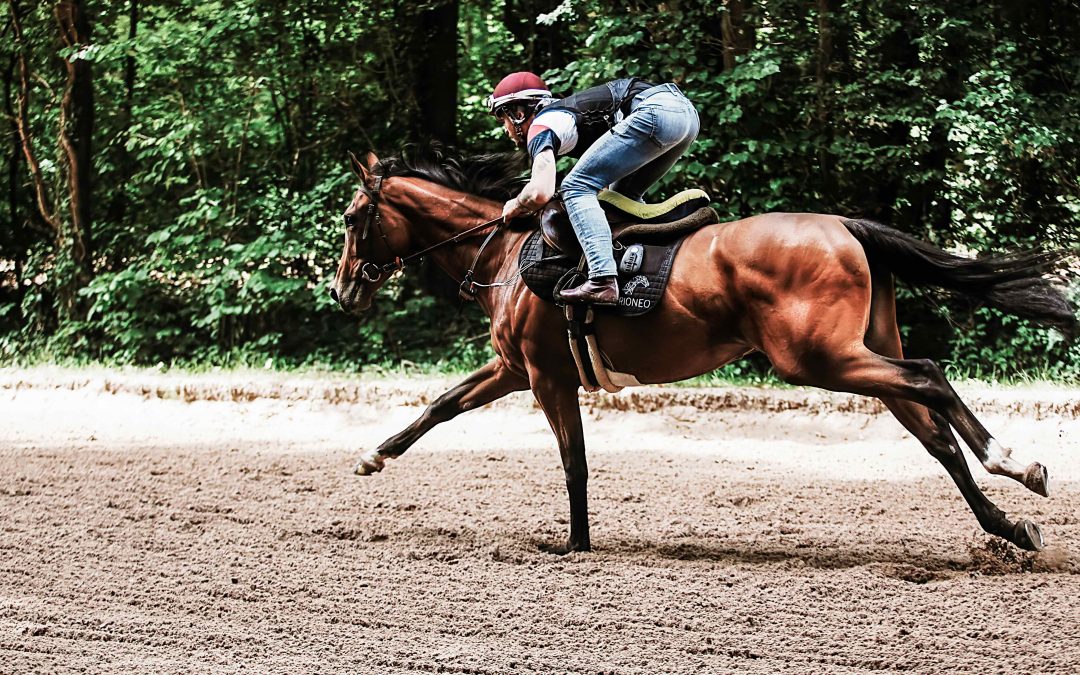Horses heart rate monitors are a great ally in sports training because it allows the heart rate to be collected to the nearest second. In all sports, it has become an essential tool in the performance management of top-level sportsmen and women, and is particularly relevant to use in the training routine of a racehorse.
Here are 8 good reasons why it is particularly useful for racehorses’ training and monitoring.
1. Measure the maximum heart rate
The first reason to use a heart rate monitor is its ability to measure a horse’s maximum heart rate during exercise. This is the maximum number of beats per minute that a horse can reach during exercise. It is unique to each horse, decreases slightly with age but does not change with training and is not a performance indicator.
Nevertheless, it allows a better understanding of a horse’s work, to understand his effort and to make it work on heart rate ranges that are specific to him.
Knowing the maximum heart rate makes it possible to evaluate the difficulty of the work required by observing the percentage of the maximum heart rate at which the horse has worked. It is possible to define 4 main work zones corresponding to 4 levels of intensity. Training a horse in a particular zone will have a different physiological effect.
2. Quantify the training intensity thanks to heart rate evolution throughout the effort
The heart rate measured by the heart rate monitor is of particular interest to trainers who wish to objectively assess the effort their horses put into training. Reading back cardio data during training provides an objective help to understand how and when the required effort has been taken up. What was the most difficult moment? How efficiently did the energy metabolism get going?
The heart rate monitor provides a reliable measure of the strain on the horse’s energy metabolism, as the measured heart rate (HR) assesses the suitability of the horse’s cardiovascular system for the intensity of a workload during exercise.
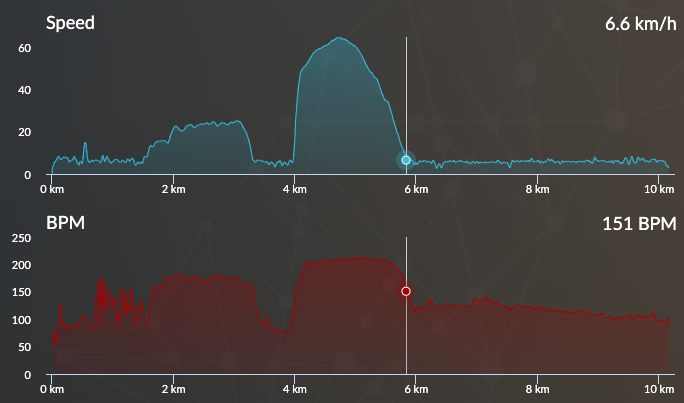
3. Measure recovery
Using a heart rate monitor offers the possibility to characterize the recovery of a horse by monitoring the heart rate throughout an exercise and especially at the end of it.
Recovery is one of the main indicators of a horse’s fitness: the better a horse’s recovery, the better his fitness. Analysed in parallel with the intensity of the work required, a horse’s fitness is a good way of confirming whether a horse is ready to run. There are 4 heart rate zones to be analysed using a heart rate monitor to characterise the recovery of racehorses :
- The work zone: this zone allows to quantify the level of heart rate reached during the effort. The difficulty of a workout can be assessed by observing what percentage of the horse’s HR Max has worked.
- The deceleration zone at the end of work: the speed decreases significantly but the heart rate remains high. This zone indicates the intensity of the exercise.
- The zone of rapid decrease in heart rate: the speed is considerably reduced and the heart rate decreases greatly. This zone qualifies the rapid recovery, capacity of recovery immediately after the effort: the aim here is for the horse to return very quickly to very low levels.
- The zone of slow heart rate decrease: the speed is considerably reduced and the heart rate decreases slowly. This zone qualifies the slow recovery, and gives indications on fitness: the closer the heart rate reached the initial heart rate, the better the slow recovery.
4. Find the balance between under-training and overtraining
The use of a heart rate monitor provides objective figures to support workload assessment. By having an objective view of the workload demanded of each horse it is possible to optimise performance by reaching a training intensity in the right balance between over and under training.
Under training is revealed by a heart rate monitor: the horse does not or hardly ever comes to work in areas of maximum heart rate. While under training can not only lead to poor performance in relation to the horse’s quality, it also represents a risk of injury during unusual maximum efforts, e.g. during a race.
Overtraining is characterised by very poor or deteriorating recovery levels. In veterinary analysis, the electrocardiogram (ECG) can show arrhythmias that are indicative of overtraining. Overtraining presents a high risk of injury to the horse if he works beyond his limits.
5. Individualise the training
6. Evaluate the fitness
Longitudinal monitoring of a horse’s heart rate allows individual training. For each horse, a heart rate monitor allows to build a table of reference data: we can then have in mind for each horse the max HR, the resting HR, the usual recovery levels according to the work. From this table, each training session is an opportunity to analyse the evolution of the recovery parameters in order to lighten or on the contrary increase the workload.
Individualising the workload is thus possible and forming lots according to the workload required by each horse can be a solution for individualising training.
Before the race, make sure that the horse’s progress is visible and that he has reached a sufficient level to have a good chance in the race. This work is greatly facilitated by EQUIMETRE as it allows you to keep a logbook of the horse’s data at work over time. This data is particularly useful for 2 year olds because it allows them to know from the start their physical condition, their level of recovery, and thus to see what is already positive in them or what needs to be improved quickly.
After the race, a heart rate monitor ensures that the horse’s condition has not deteriorated and that he has tolerated effort, transport and pressure well. It should be noted that heart rate is not the only parameter to be considered: to see the horse’s evolution over time, heart rate is at the heart of a whole set of parameters.
7. Detect heart and respiratory pathologies
A sudden and unexplained increase in HR can be a sign of pain, stress, fear. HR spikes or unusual HR in the warm-up can be warning signs of disease.

An elevated heart rate during the warm-up can be a sign of pain. The horse may be in pain somewhere, and this is reflected in an increased heart rate even though the intensity of the effort is not high.
Cardiac arrhythmias cause performance impairment and affect recovery. It is possible to look at the heart rate (HR) with EQUIMETRE to highlight abnormal HR and to have the electrocardiogram data collected by EQUIMETRE reviewed by your veterinarian to see if the horse has shown signs of abnormalities. Pulmonary haemorrhages will be noticed if the horse is bleeding from the nose, or if his heart rate has a longer recovery time after exercise because he is in deficit of oxygen. In this case, it is necessary to look if there is a problem with the lungs.
A horse with pain, tendinitis or bone-related pain, for example, may have an alteration in the way he moves, so the parameters of pace and stride amplitude will change with increased heart rate. By combining all the parameters that EQUIMETRE allows to measure, it is possible to see what is going on with the horse: is it a lack of quality? Is it an underlying health problem?
8. Easily share exercising ECGs with your veterinarian
Arioneo electrodes, a major technological development, can overcome three obstacles to the collection of the heart signal: the horse’s hair, the thickness of his skin, and the intense vibrations during exercise. Equimetre’s electrodes are made from a unique fusion of materials specially designed for the equine athlete. They are immersed in a foam that allows the horse’s perspiration to be absorbed, while ensuring good conduction of the heart signal by softening the contact with the horse’s skin to avoid injury. These electrodes are internationally patented.
The EQUIMETRE heart rate monitor automatically records the complete ECG for all monitored training sessions, even at full speed. This collection of ECGs is valuable for veterinarians as it can help them to detect cardiorespiratory pathologies in race horses, including arrhythmias such as atrial fibrillations. In her thesis “Etiology of sudden death in horses”, Nathalie CADEC explains: “ECG monitoring of cardiac activity during physical exercise (racing) in horses suspected of atrial fibrillation has made it possible to highlight the time of onset of atrial fibrillation.” The veterinarian can remotely access the ECGs from any training of his choice, including training prior to signs of disease, for comparison.
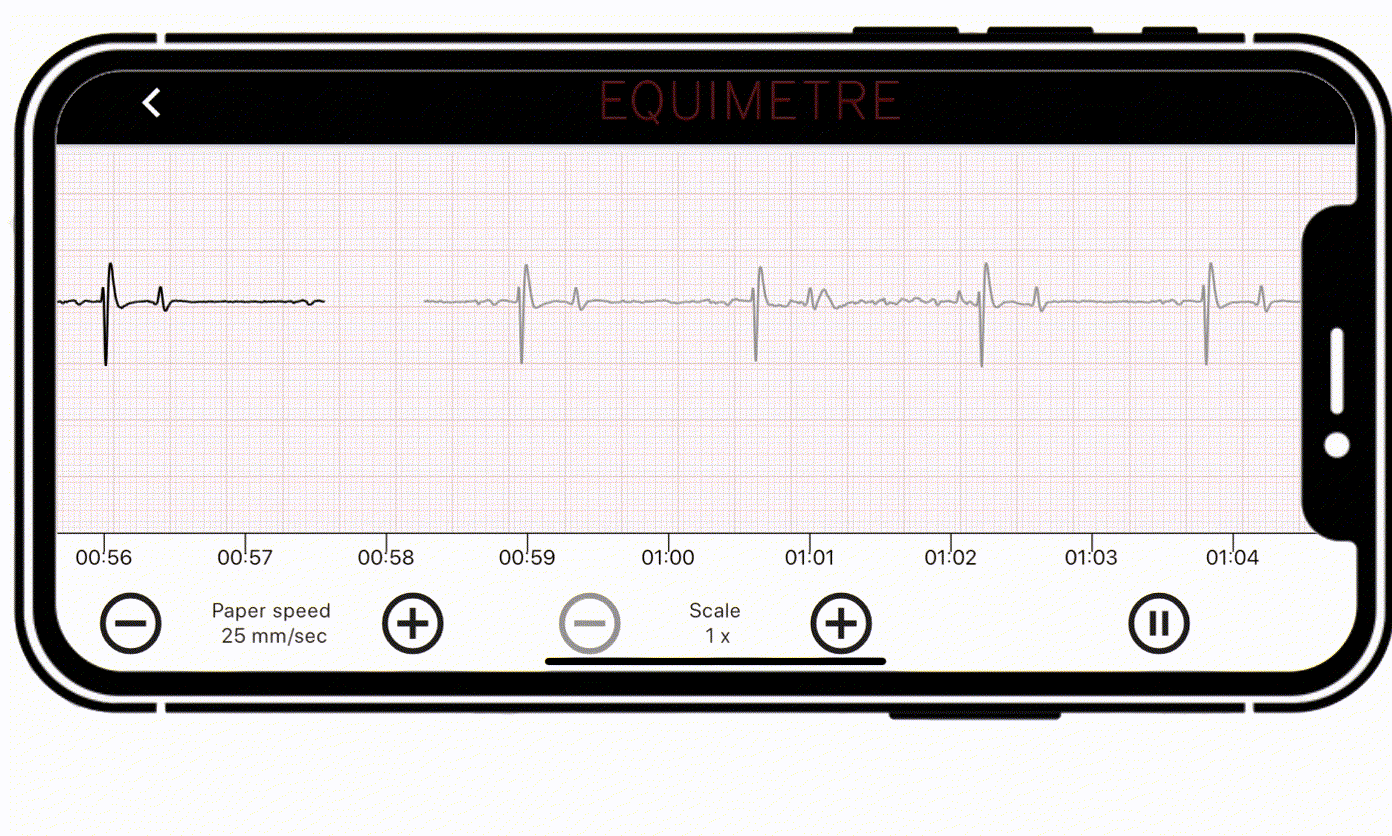
Key words: racehorse heart rate, follow-up tool, maximum heart rate, effort intensity, racehorse heart rate evolution, assess racehorse training, racehorse energy metabolism, racehorse recovery, under training and over training, longitudinal monitoring, 2 years olds, state of fitness, heart and respiratory pathologies, cardiac arrythmias, racehorse electrocardiogram, ECG

